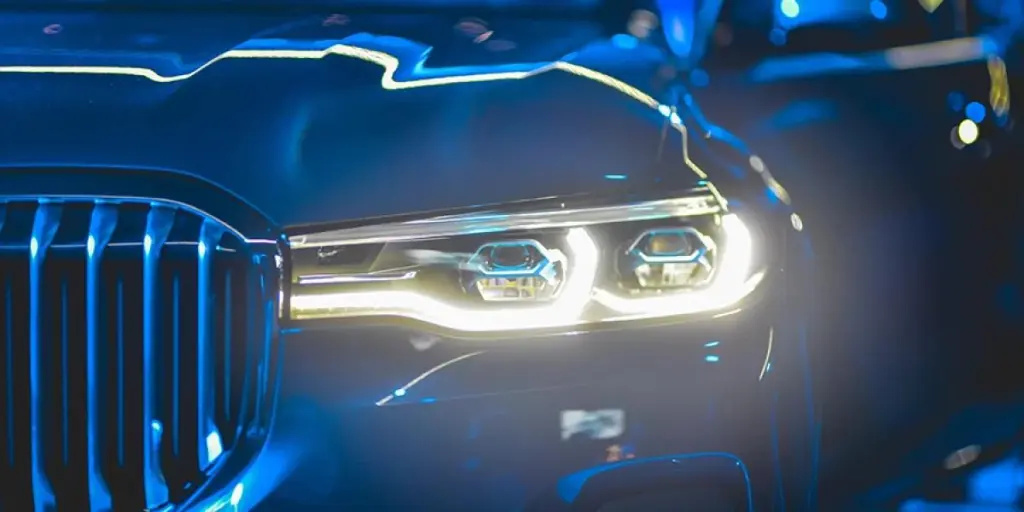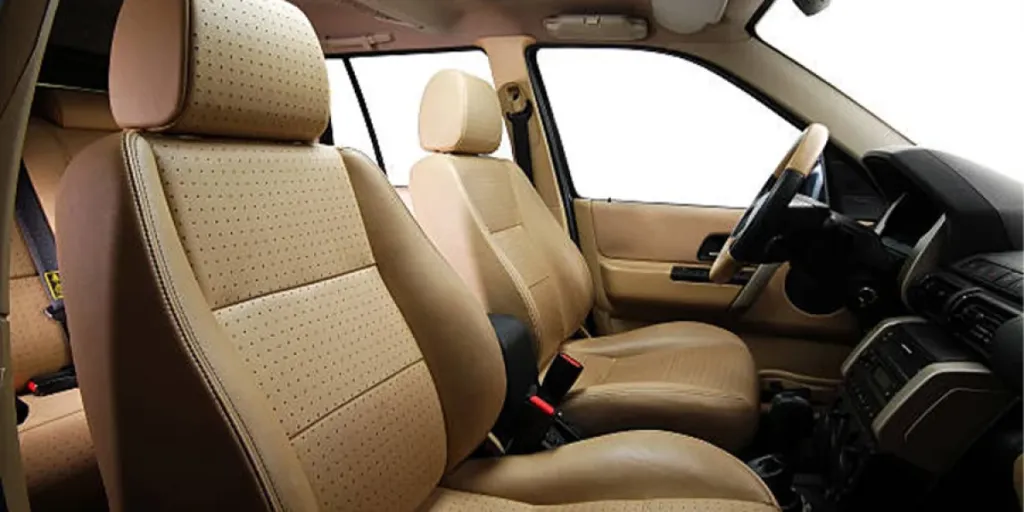Brakes are an essential part of a vehicle’s braking system, ensuring the safety of its occupants, others on the road, and the vehicle’s performance.
Having the right brake fluid can be the difference between stopping and crashing. Therefore, regular brake maintenance is imperative to upholding safety.
In this article, we’ll cover everything you need to know about brake fluid, including the various types, when to replace it, and how to do so properly.
Table of Contents
An overview of the brake fluid market
What is brake fluid?
Types of brake fluids
When to change brake fluid
Dashboard warning light
Soft brake pedal
Burning smell and irregular noises
Ineffective braking
Brake fluid discoloration
How to check brake fluid
Step 1: Locate the engine bay
Step 2: Locate the brake fluid reservoir
Step 3: Check the brake fluid level
Step 4: Refill the brake fluid
Summing up
An overview of the brake fluid market
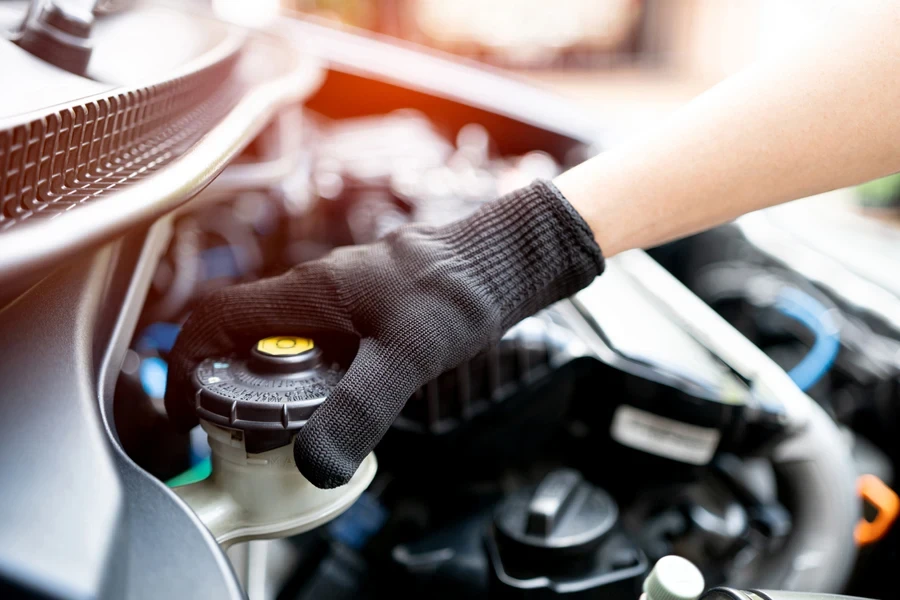
Mordor Intelligence reports that 1.24 billion liters of brake fluid were sold in 2025 and is projected to grow to 1.51 billion liters by 2030 – a 4.05% CAGR.
In addition, a Research and Markets report shows the automotive brake fluid market was valued at USD 2.74 billion in 2024 and is projected to grow at a CAGR of 6.73% to reach USD 4.07 billion by 2030.
Increased vehicle sales, especially in developing countries, are helping to drive this market. Continued safety awareness also plays a role.
Finally, technological advancements in the automotive industry, such as traction control, electronic stability, anti-lock braking, and regenerative braking systems, are revolutionizing automotive braking system technologies. These new technologies require improved brake fluid formulas for optimal performance.
What is brake fluid?
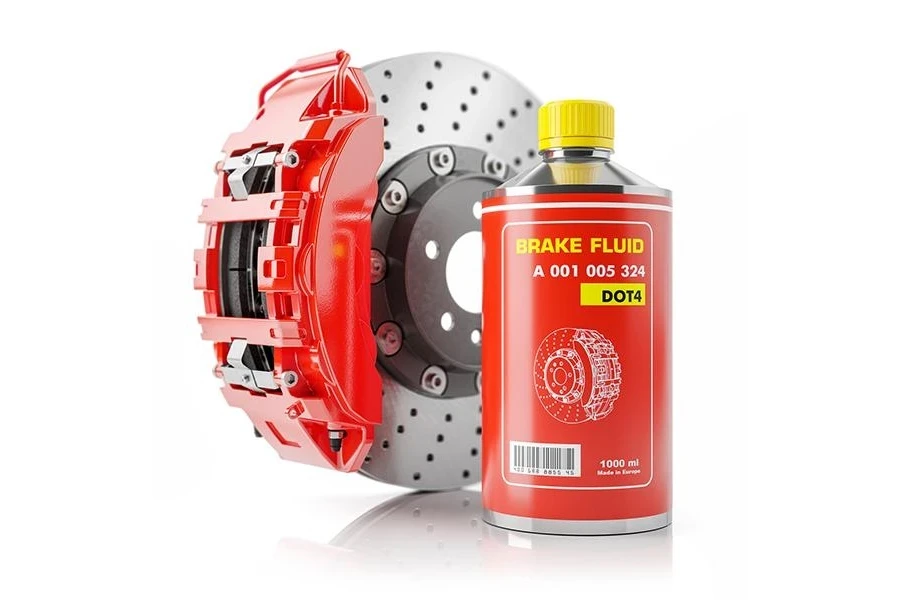
Brake fluid is a hydraulic fluid used by a vehicle’s brake system to turn the force applied on the brake pedal into pressure that activates the brake pads and stops a vehicle. It is one of the most critical fluids in a vehicle and should be changed at designated intervals.
Vehicle manufacturers recommend changing the brake fluid every 30,000 miles, or after two years. However, the type of brake fluid used, a person’s driving habits, and their braking patterns will also affect how often brake fluid should be changed.
Customers who drive in areas with constant stop-and-go traffic, sudden braking, or increased mileage may need to change their brake fluid more often. Customers should also consult their vehicle owner’s manual to know how often their vehicle needs a brake fluid flush or replacement.
Types of brake fluids
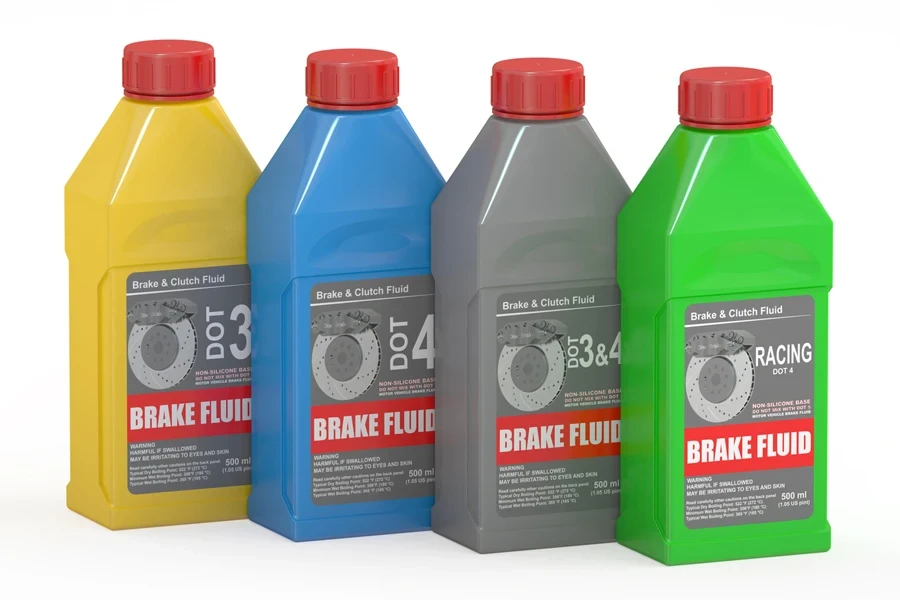
There are four main types of brake fluid in the US market: DOT 3, DOT 4,DOT 5, and DOT 5.1.
(DOT stands for the Department of Transportation, which regulates the specifications for brake fluid.)
DOT 3, DOT 4, and DOT 5.1 are glycol-based fluids, while DOT 5 is silicone-based. Glycol-based brake fluids absorb water, but the silicone-based fluid does not. So, here are a few things to keep in mind:
- DOT 4 can be used in a vehicle that uses DOT 3, but not vice versa
- DOT 5 fluid should never be used in a vehicle that requires DOT 3 or 4
- DOT 5 brake fluid doesn’t mix well with glycol fluids in vehicles with ABS brakes
DOT 3/4/5 brake fluids are also commonly used in European countries. However, European regulations may also refer to ISO 4925 or SAE J1703/1704 standards, which align closely with DOT classifications.
DOT 4 is the most commonly used type in modern European vehicles, especially those equipped with ABS or electronic stability systems.
As a small business and retailer, it’s advisable to stock all types of brake fluid to attract customers regardless of their vehicle. Knowing the types of brake fluid will enable you to educate your customers and sell the right fluid for them.
When to change brake fluid
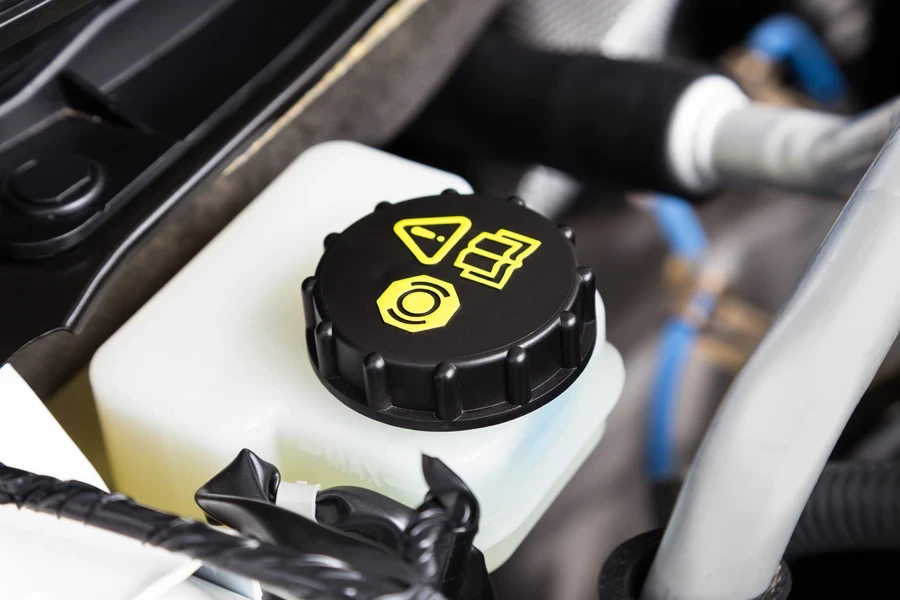
Some vehicle owners may not know when to change their brake fluid; as a retailer, you need to educate your customers on the right time to replace brake fluid. Being resourceful will give you an upper hand in the market and keep customers loyal.
Some of the signs a vehicle needs a brake fluid change include:
Dashboard warning light
The ABS dashboard warning light is among the first signs brake fluid needs replacing. It shows an issue with the anti-lock braking system, which prevents the wheels from locking up when braking and prevents skids and traction.
Soft brake pedal
If the brake pedal is soft, bouncy, or spongy, it is time to change the brake fluid. If the brake pedal has to be pressed all the way to the floor for the brakes to respond, this is also an indication that the brake fluid must be changed. This is because when brake fluid is low, air fills the gaps in the pipes, leading to soft brakes.
Burning smell and irregular noises
A burning smell or irregular noises like screeching, squeaking, or squealing when braking may indicate that the brake fluid needs replacing. However, you must always let the vehicle cool down before inspecting the fluid.
Ineffective braking
A brake’s efficiency relies on it being responsive in an emergency. If they are not responding as quickly as they used to, or it is difficult to slow down, the brake fluid should be checked.
Brake fluid discoloration
While the brake fluid is in a closed system, debris and moisture can contaminate it, causing discoloration. If moisture and debris find their way into the braking system, they will likely lower the braking fluid’s boiling point, affecting its performance.
How to check brake fluid
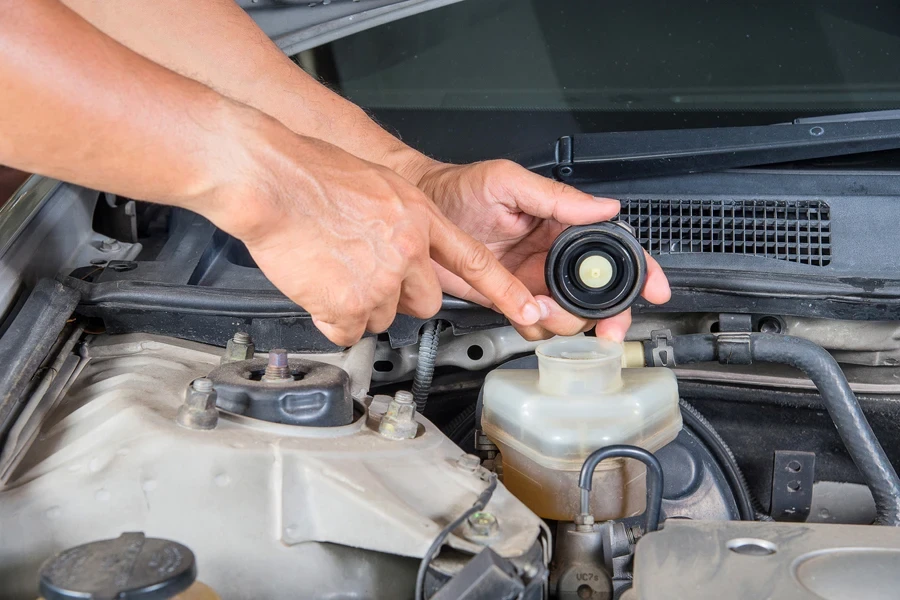
Knowing your brake fluid levels is essential before embarking on a journey. If your customers are unsure how to check their brake fluid levels, instruct them to:
Step 1: Locate the engine bay
First, open the bonnet and locate the vehicle’s engine bay. (Bonnet latch location may vary depending on the vehicle; if unsure, the customer should check the owner’s manual.)
Step 2: Locate the brake fluid reservoir
The brake fluid reservoir is usually located at the back of the engine bay, and is likely a translucent container with a black screw with yellow markings. Markings on the side show maximum and minimum fluid levels.
Step 3: Check the brake fluid level
If brake fluid levels are low – as indicated by markings on the fluid reservoir – it should be topped up.
Step 4: Refill the brake fluid
The brake fluid should be topped up using the correct fluid for their vehicle. If the customer is unsure which fluid to use, they should consult their car owner’s handbook.
The brake fluid should only be filled to the maximum mark, and be poured in a way that avoids spillage, as brake fluid can damage paint. In case of spillage, any contaminated surfaces should be cleaned to avoid damage.
Summing up
Brake fluid is a necessary component for every vehicle to operate safely. Given its steady demand, brake fluid can be a lucrative product for small businesses and has upscaling potential since it can be sold with other products like brake pads, rotors, and other vehicle accessories. Brake fluid also has a large customer base, from auto repair shops and car dealerships to DIY motorheads.
Finally, knowing the specific types of brake fluids and when they should be used will help you to educate your customers, creating customer loyalty and boosting satisfaction.

